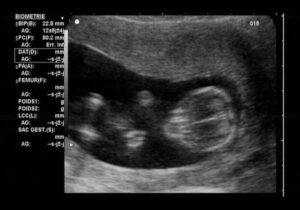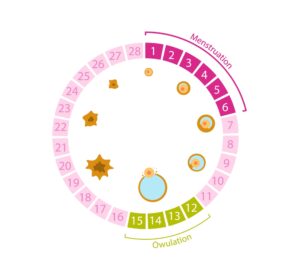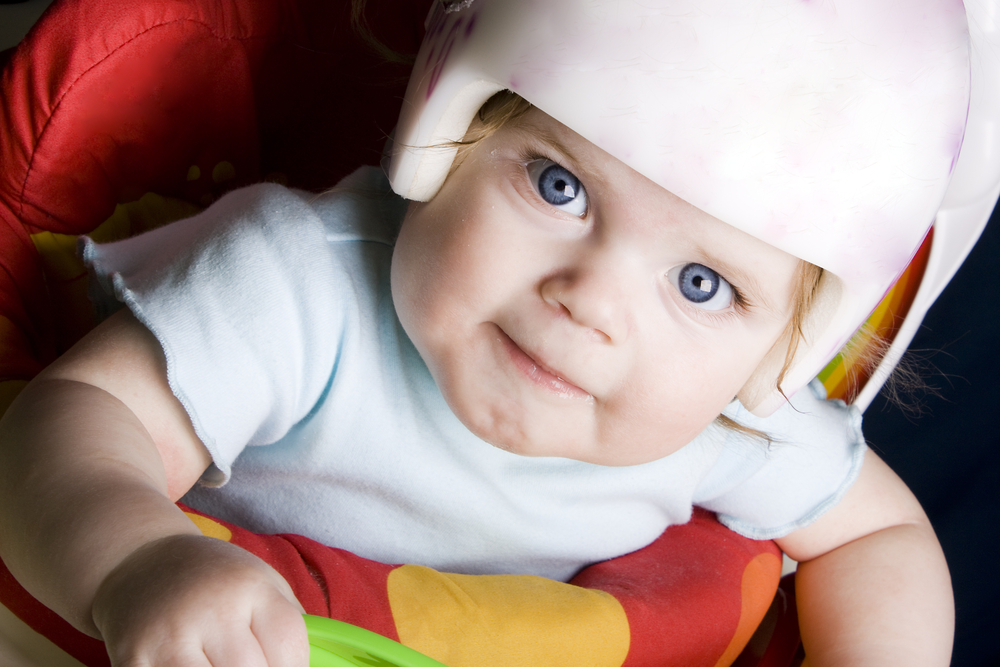Plagiocephaly is a condition that affects many newborns and young children; it is a cranial deformity characterized by a flat or asymmetrical shape of a baby’s or young child’s head. This issue can be caused by various factors but is often associated with prolonged pressure on a specific part of the skull, such as when the child spends a lot of time lying on one side of their head.
What It Involves
Plagiocephaly involves a deformation of the baby’s head, which can become flat or elongated in one direction. This condition can also affect the appearance of the face, leading to facial asymmetry. It is important to note that plagiocephaly is not just a cosmetic issue; it can have long-term health effects.
Anterior Plagiocephaly
Anterior plagiocephaly occurs when the front part of the baby’s head becomes flat or asymmetric. This can be caused by prolonged pressure on the front of the skull, such as when the baby is frequently kept in a supine position.
Posterior plagiocephaly
Posterior plagiocephaly occurs when the back part of the baby’s head becomes flat or asymmetric. This condition can be caused by prolonged pressure on the back of the skull, such as when the baby spends a lot of time lying on their back.
Lateral plagiocephaly
Lateral plagiocephaly is one of the most common variations of positional plagiocephaly, where the baby’s head develops asymmetrically due to constant pressure on one side of the skull. This condition often results from behaviors such as sleeping or resting in a specific position, which can lead to a noticeable deformity on the lateral part of the head. Lateral plagiocephaly can vary in severity, but it’s essential to recognize and address it promptly. To correct this condition, it may be helpful to encourage the baby to spend more time sleeping and playing on the opposite side of the flat head. The use of devices like positional pillows or special bandages may also be considered in more severe cases. However, before pursuing any treatment, it’s crucial to consult with a pediatrician or specialist for a thorough assessment and personalized guidance to ensure your baby’s head health and symmetry.
Until What Age Can Plagiocephaly Persist
Plagiocephaly can persist until the child’s skull is still in the growth phase. This means that if left untreated, the flat or asymmetric head can become a permanent feature. Therefore, it is essential to address the issue as early as possible.
When to Worry
It’s normal for newborns to have a slightly misshapen head at birth due to the process of passing through the birth canal. However, if the deformity persists or worsens in the early months of a baby’s life, it may be a cause for concern. It’s important to consult with a pediatrician or specialist if you have concerns about the shape of your baby’s head.
Does Plagiocephaly Correct Itself?
Many parents wonder if plagiocephaly corrects itself over time. In some cases, especially if the condition is mild, a baby’s head may improve over time and with the adoption of preventive measures. However, in many cases, intervention is required to effectively correct plagiocephaly.
Plagiocephaly: Treatment Options
The treatment of plagiocephaly depends on the severity of the issue and its underlying cause. It is crucial to consult a doctor or specialist before embarking on any treatment plan, as each case may require a different approach. Here are some treatment options that may be considered:
Correct Positioning
Proper positioning is often the first line of defense against plagiocephaly. Encouraging the child to spend more time sleeping and playing on a different side of the flat head can help redistribute pressure on the head and promote a more natural shape. Additionally, avoid having the baby sleep in the same position all the time, alternating between having the head turned to the left and to the right.
Physiotherapy
In some cases, physical therapy may be recommended. A specialized physical therapist can work with the child to perform specific exercises that help strengthen the muscles of the neck and head, thus aiding in improving cranial asymmetry. This approach is often effective for mild to moderate plagiocephaly.
Positional Devices
In the treatment of plagiocephaly, positional devices like pillows or special bands may be used. These devices are designed to keep the baby’s head in a proper position during sleep or while awake. However, it is essential to use such devices under the supervision of a doctor, as improper use could lead to problems.
Cranial Traction
In more severe cases of plagiocephaly, cranial traction may be necessary. This is a medical technique that involves applying gentle force to the baby’s head to promote more even skull growth. This treatment is typically reserved for situations where other approaches have not been successful.
Below are some of the best pediatric hospitals in the United States, but remember that there are hospitals and specialized centers worldwide that offer treatments for plagiocephaly:
- Boston Children’s Hospital – Boston, Massachusetts: One of the world’s leading pediatric hospitals, known for its excellent pediatric care and specialists.
- Children’s Hospital of Philadelphia (CHOP) – Philadelphia, Pennsylvania: CHOP is renowned for its wide range of pediatric medical services, including those for plagiocephaly.
- Cincinnati Children’s Hospital Medical Center – Cincinnati, Ohio: This pediatric hospital is known for its leadership in pediatric research and care.
- Texas Children’s Hospital – Houston, Texas: A top-tier pediatric hospital that offers a wide range of pediatric services, including those for plagiocephaly.
- Seattle Children’s Hospital – Seattle, Washington: Specializing in pediatric care, Seattle Children’s provides advanced services for plagiocephaly.
- Children’s National Hospital – Washington, D.C.: A leading pediatric hospital in the United States, with a wide range of pediatric services, including plagiocephaly correction.
- Johns Hopkins Children’s Center – Baltimore, Maryland: Part of the Johns Hopkins Hospital, this center is known for its excellence in pediatric medical care.
Please note that treatment options and availability may also vary within these hospital facilities.
Constant monitoring
Regardless of the chosen treatment option, ongoing monitoring is essential. The pediatrician or specialist will closely track the child’s progress to ensure that the treatment is working as expected. This continuous monitoring helps determine whether any adjustments to the treatment plan are necessary.
Conclusions
Plagiocephaly is a condition that can affect many newborns and young children, but it can be prevented or its effects corrected with the right approach. By using proper positioning, preventive measures, and, if necessary, medical treatment, you can ensure that your child’s head grows healthily and symmetrically. If you have concerns about your child’s plagiocephaly, do not hesitate to consult a medical professional for a thorough evaluation and an appropriate treatment plan.

 Italiano
Italiano



